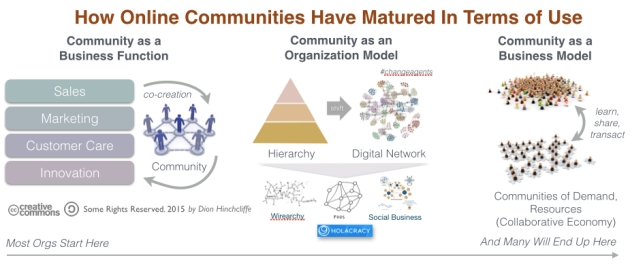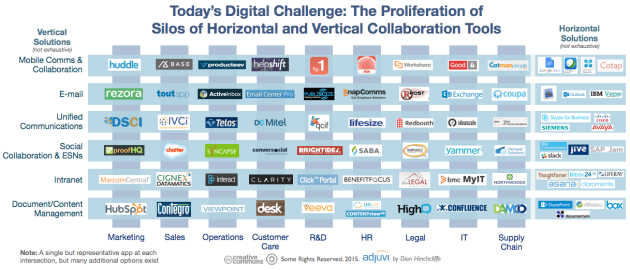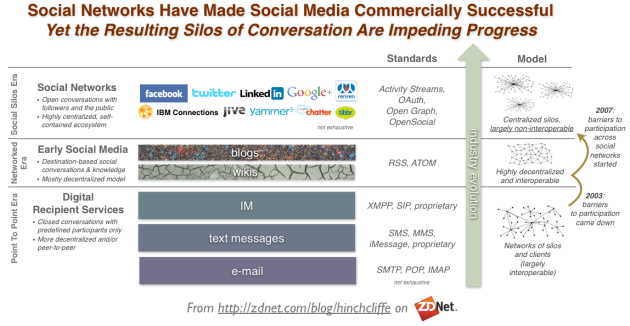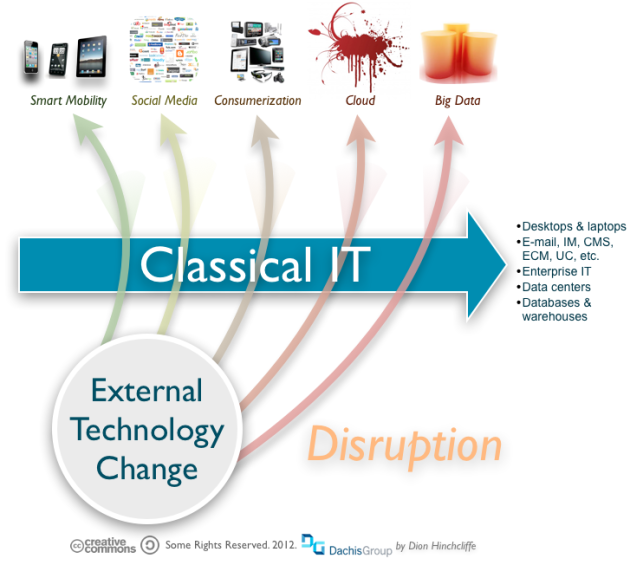How Online Communities Became Central To How We Work
November 20, 2015 2 Comments
Communities make just about everything we do today in our organizations better. That was essentially the message at FeverBee SPRINT last week in San Francisco, a confab of several hundred online community practitioners sharing lessons learned and best practices.
To be sure, we have sometimes been able to do what digital communities make possible in other, older ways, but these outdated methods are invariably more time-consuming, costly, and scale up relatively poorly. In fact, it’s the singularly remarkable concept of letting the network do the work that is the foundational concept behind what makes a community so special in how it achieves the many remarkable things that it does.
Today, all of our organizations today are greatly outnumbered by their stakeholders. We always were. But now they are all connected continuously to us and attempting to engage. We’ve also learned that the more that we can somehow engage with them, the more shared value that can be created. One key strategy, is to gather our stakeholders around us digitally, and let them share in the effort. This offloads us and makes engagement at scale manageable, even possible.
None of this is new or surprising for those who’ve been involved in communities. Created around a group of people with a set of common purposes, communities will go almost entirely of themselves, with its members supporting each other, learning from each other, innovating together, co-creating, and more, with some oversight by that absolutely key role, the online community manager.
So when companies develop purposeful digital venues and enlist the participation of interested stakeholders, those communities will still do those same things, but around more work-focused goals, like customer care, product education, sales enablement, product development, and numerous other use cases. The key concept here is that effort is shared by the entire community, and not provided entirely by the one stakeholder that used to do most or all of the work in a fairly limited, expensive, and slow fashion by comparison: The organization itself.
Getting back to the conference, I was invited by FeverBee’s Richard Millington to provide a look at the near future of community management, the profession that has emerged to make communities thrive and succeed, and which no community can afford not to invest as much as it can, if it hopes to see the desired results. Using the latest case examples and customer results, I took a look at some of the leading examples of what organizations are doing with community, to extrapolate what we all might accomplish with a bit better understanding of what’s possible. Here is what I believe that we’ve learned and what’s next for most of us.
Recent Strategic Lessons of Community Management
- Community success measures and KPIs are maturing. In some cases, companies have gone well beyond superficial adoption metrics like unique monthly logins, and measured business impact such as process effectiveness, productivity improvements, higher customer satisfaction, and more. This letting organizations that measure and optimize for these outcomes, get outsized results.
- New ways of working are being developed using a community-first model. Organizations like the industrial product giant Bosch have imagined how their core processes work to literally require community to get the them done, in order to maximize the benefits. I cited how one key process that took 4 weeks, was collapsed to 6 days when it was re-engineered to work using the company’s enterprise social network.
- Community is becoming the organizing principle for digital experience. At first, using the scale of community as a shock absorber for engaging at scale, companies are finding that community makes virtually every customer and workforce function better by unleashing co-creation. Marketing works better (advocacy), sales works better (community reference checks), operations work better (social exception handling), customer care (community-based support), and so on. The same across digital channels as well, from Web site to mobile application: When community is present, the channel works better.
- Companies that teach their employees modern digital literacy skills do better with community. Folks like John Stepper at Deutsche Bank are building skills like Working Out Loud to maximize the returns on community.
- Community ambassador programs are driving sustained results. Just like the data now says that advocacy programs work with customer communities to drive an increase in corporate growth, the communities themselves are using formal champions programs who can be used to spread awareness, skills, and support.
- Human resources has discovered community. The CHRO in many organizations is now sponsoring enterprise-wide community-based employee engagement efforts, while the rest of the department has discovered what amazing stakeholders are already in our communities, ready to be tapped for recruiting, hiring, onboarding, employee retention programs, learning and development, and knowledge capture.
In short, I believe the future of management itself is significantly described by the emerging role of community management, a skill which is borne out of guiding — and therefore leading — large groups of decentralized people with shared objectives towards common goals. We are witnessing the network-enablement of management in powerful ways, and it’s part of the whole package of digital skills that we must convey to our entire workforce, not just community managers, though they are the ones that need it first.
It was also great to see industry luminaries like Rachel Happe, Kare Anderson, and others at the event show us how far we’ve come with communities.
The keynote deck I used for FeverBee SPRINT 2015 in San Francisco can be found on Slideshare below:
Additional Reading:









































































